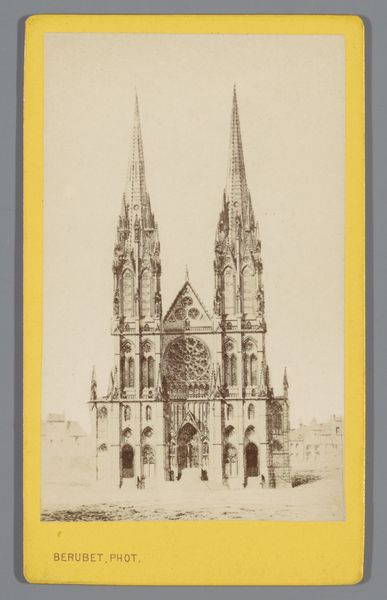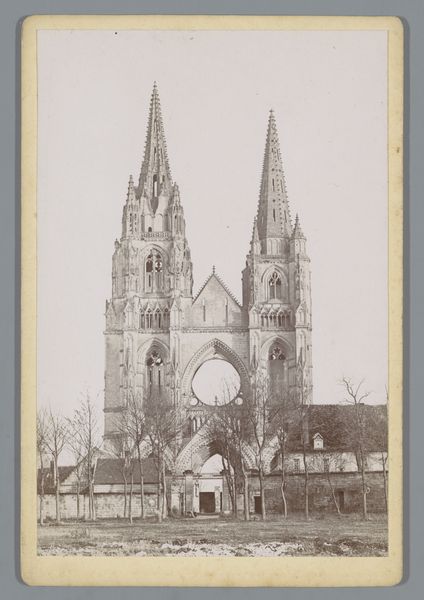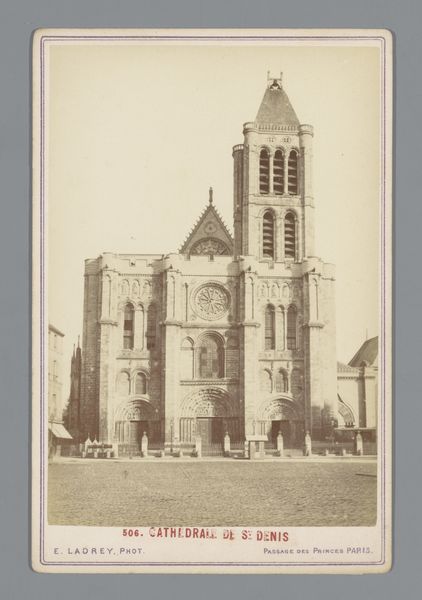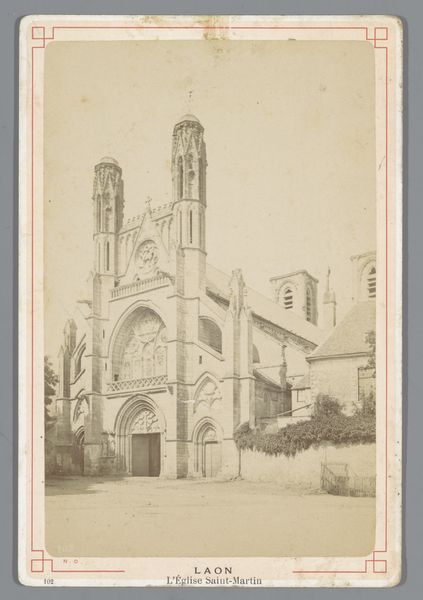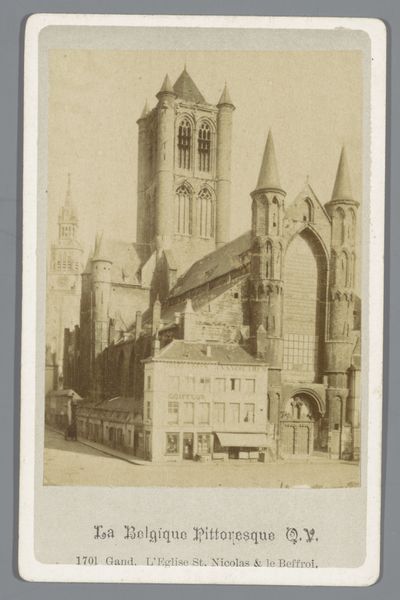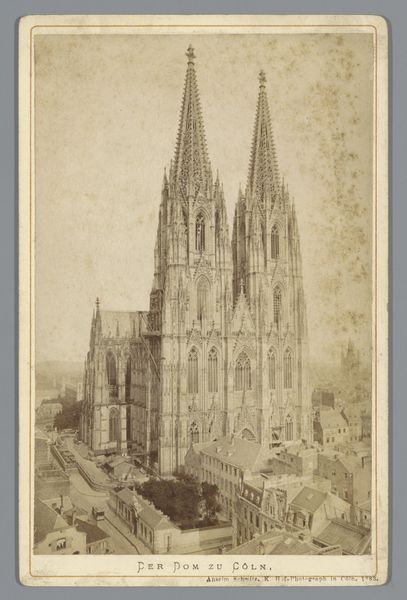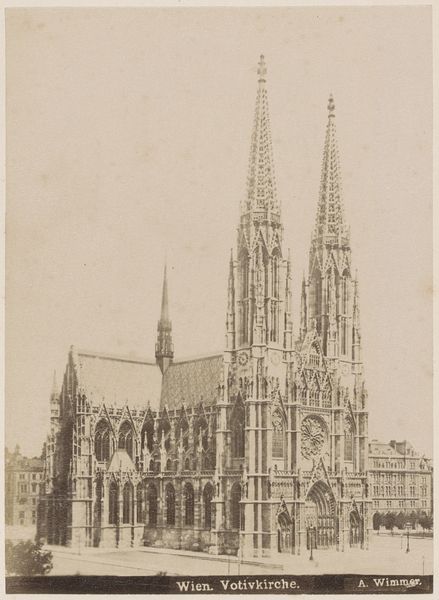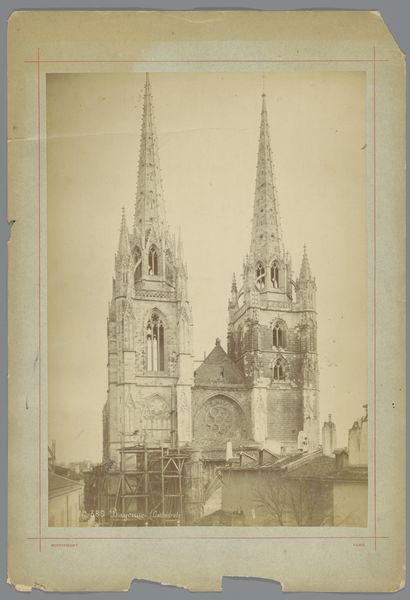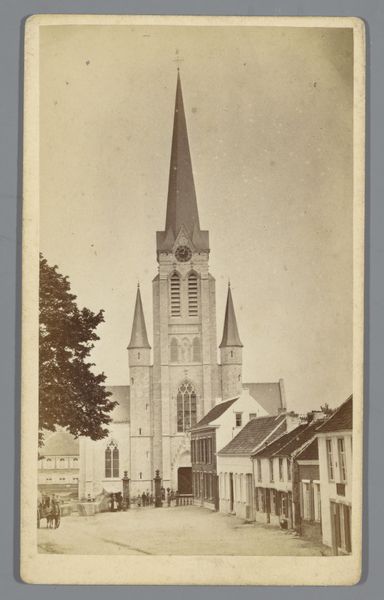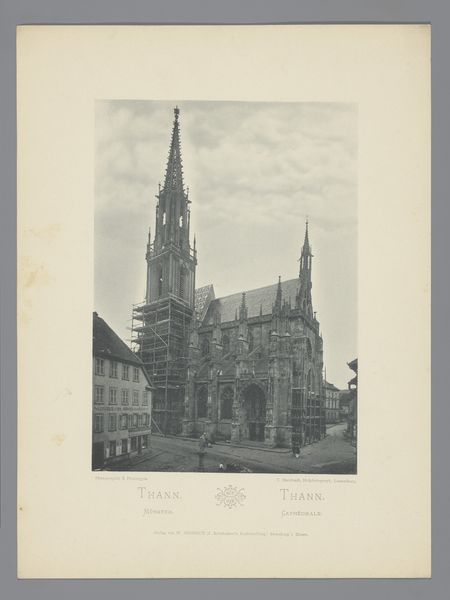
print, photography, site-specific
# print
#
landscape
#
photography
#
site-specific
#
cityscape
#
building
Dimensions: height 163 mm, width 104 mm
Copyright: Rijks Museum: Open Domain
Curator: Today, we’re looking at an image captured by Étienne Neurdein sometime between 1870 and 1900. It’s titled "Gezicht op de Saint-Remi te Reims," which translates to "View of Saint-Remi in Reims," and presents a head-on photograph of the basilica’s façade. Editor: It strikes me as immensely solid and enduring. The stone is bleached pale by the sun, giving the whole scene a sort of timeless quality, as though it has always stood just like this, impervious to the world around it. The symmetry is remarkable. Curator: Absolutely. Consider the cultural context during which Neurdein created this image. France, still reeling from political and social upheaval, found in such architectural representations a symbol of continuity and national identity. These weren’t just buildings; they represented enduring values and power. Editor: And the choice to frame the basilica frontally, emphasizing its symmetrical form… It calls to mind medieval notions of divine order reflected in architecture. Each window, each archway, seems carefully placed to evoke harmony and balance, reflecting a celestial ideal. Curator: It’s fascinating to think about how the basilica’s location also informed its role. Reims has been a city of coronations and religious significance, and Saint-Remi, housing the relics of Saint Remi, played a key part in establishing royal legitimacy. Neurdein’s photograph taps into centuries of this historical weight. Editor: Notice how the composition, the sharp clarity, focuses on the architectural detail. The way the light plays on the carved surfaces hints at something beyond the physical structure, evoking a sense of spirituality and awe. Those tall spires reaching skyward, they embody humankind’s eternal quest for connection to the divine. Curator: A crucial lens through which to view this is to acknowledge how power structures have historically utilized religion. The way images such as these cemented both religious and national identities must be critically considered to avoid glorifying historical inequalities. Editor: Ultimately, it's more than just a document. The photographer clearly wants to instill something into those who view it: pride, awe, even submission. It leaves us pondering not only Reims' rich religious heritage but also its significance within the broader context of human spirituality. Curator: Precisely. Considering those nuances—history, faith, national narrative—enriches our understanding immensely. Editor: Indeed. Viewing it again with all these perspectives now creates so much resonance.
Comments
No comments
Be the first to comment and join the conversation on the ultimate creative platform.

